After some further thought (and digging through my camera bag’s collection of lenses) I thought I’d try out additional lenses on my Panasonic GH2 and F&V R-300 ring light before throwing in the towel on what I was hoping to shoot with this combination. Note that I’m still probably going to make some custom rigging to make this an easy hand-held system for run-and-gun shooting…
My first test is my old Vivitar 28mm f2.5 MD-mount. I have used this lens in the past when I needed to shoot video and had to have manual control over the exposure. Although this is an old legacy lens, my video shots came out rather well using it (more on that soon –in another post). In any event, this lens isn’t exactly the same result as my 20mm pancake lens but it’s probably as close as I’m going to get (and also completely manual in operation). Here’s how it fit on the frame:
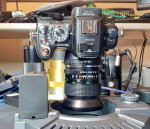
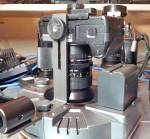
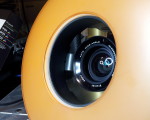
–As you can see, I can actually fit my hand around the left grip now! Also note that the camera is actually mounted as far back from the light as the stock frame will allow. I was actually a bit surprised by this as I’m sure more full-size DSLR cameras may take up more space than my mirrorless frame. Still, the spacing means that I don’t have to either rotate the light with this setup or try a different power system.
Here’s a shot I got from this arrangement:
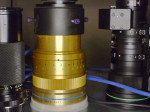
–In a close shot like this, I can actually see some of the flaws of this legacy glass in terms of sharpness and some fringe issues here and there but for video this is a fantastic piece of glass. Being fully manual also allows me much more control over the exposure –but also means I have to manage the focus all the time…
My next test was with the “kit lens” that came with the purchase of my camera body from Amazon. I’ve really only used this lens a couple of times where I needed zoom and autofocus during a video shoot. I’m actually hoping to make use of the large black lens in the background of most of these shots (to the right) for such jobs in the future but haven’t got it working yet. The zoom feature was actually necessary when working with the ring light to push the lens slightly forward to pass the light enough not to be visible in the outer corners of the shots:
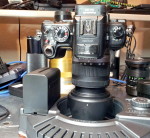
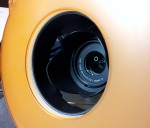
–Although I don’t actually see me using this lens too much in the future for my work, it has definitely turned out to be the best result when working with this ring light. I was very surprised with the sharpness from this lens.
Here’s a sample shot using this configuration:
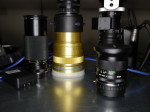
–Note that there has been no touch-up of this photo (like I would usually do). This is exactly what came out of the camera!
So, in conclusion, although I am not able to use my main “go-to” lens choices as I was hoping with this ring light, I may still have some good options anyways! I’ll keep you all posted as things develop…